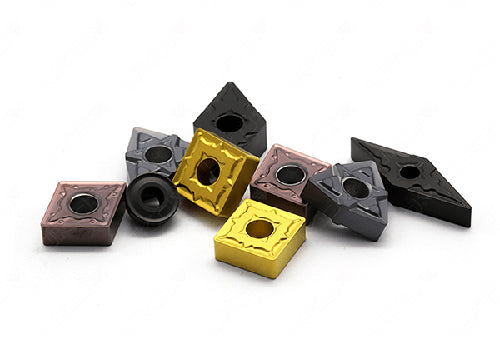
The Evolution of CNC Inserts: A Brief History
Share
Computer Numerical Control (CNC) inserts are an essential part of the machining industry. The quality of machining processes, as well as their efficiency, is determined by the type of CNC inserts used. Since the 1950s, CNC inserts have undergone significant changes and improvements in terms of their design, materials, and technology. In this blog post, we will discuss the evolution of CNC inserts, highlighting the significant milestones in their development.
The First Generation of CNC Inserts
The first CNC inserts were introduced in the 1950s. These inserts used a single point cutting tool, which was manually adjusted to achieve the desired cutting depth. The inserts were made from high-speed steel, which was capable of withstanding the high cutting temperatures. However, the main problem with this material was its high wear rate. Thus, the inserts needed frequent replacement, leading to increased downtime and decreased productivity.
The Second Generation of CNC Inserts
In the 1960s, carbide inserts were introduced, marking the beginning of the second generation of CNC inserts. Carbide is a harder and more wear-resistant material than high-speed steel, enabling the inserts to last longer and requiring less frequent replacement. The introduction of carbide inserts also led to increased cutting speeds and feed rates, improving machining efficiency.
The Third Generation of CNC Inserts
The third generation of CNC inserts began in the 1980s with the introduction of coated carbide inserts. The coating on the inserts reduced friction and wear, increasing their lifespan and reducing the need for frequent replacements. The coating also enabled the inserts to withstand higher cutting speeds and feed rates, enhancing machining efficiency further.
Fourth Generation of CNC Inserts
The current generation of CNC inserts was introduced in the 1990s, and it is characterized by the use of advanced materials, coatings, and cutting geometries. These inserts are made from ceramic, cubic boron nitride, and other advanced materials that offer superior wear resistance, toughness, and thermal stability. They also come with advanced coatings that reduce friction and increase tool life. The fourth-generation CNC inserts have different cutting geometries that allow for higher feed rates, improved surface finish, and reduced cutting forces.
Fifth Generation of CNC Inserts
The future of CNC inserts lies in the fifth generation, which is characterized by the use of smart materials and advanced sensors. These inserts are designed to adapt to different machining conditions and optimize their performance. They come with embedded sensors that monitor cutting parameters such as temperature, vibration, and tool wear. They also use smart materials that can change their properties in response to changing machining conditions, allowing for a more efficient and flexible machining process.
Conclusion
The evolution of CNC inserts has been a significant development in the machining industry. From the first generation of high-speed steel inserts to the fifth generation of smart materials and sensors, CNC inserts have undergone significant changes, improving machining efficiency and productivity. As technology continues to advance, we can expect further innovation in CNC inserts, leading to even more efficient and effective machining processes. The future of CNC inserts is exciting, and we should expect more advancements in the coming years.




